MEMBERS’ NEWS



The first half of 2024 has been challenging for the Trust. With the support of our Members, the Trustee Board and our staff, I am pleased to report that over the past couple of months we have moved the Trust onto a much stronger footing.
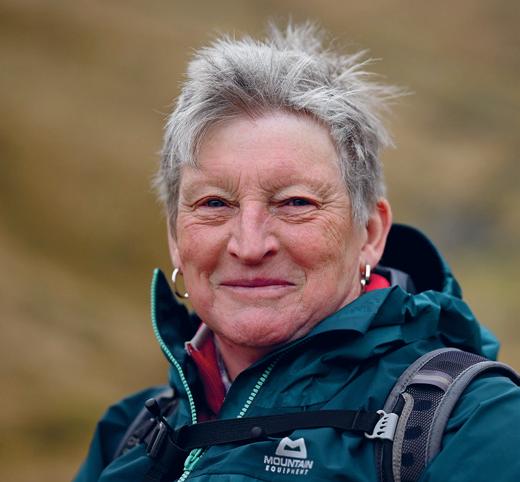
To underpin our ongoing financial sustainability, the Board has refocused the Trust’s strategic objectives to align all aspects of our work firmly with our charitable purpose, which is to conserve and protect wild places. You can view those objectives on our website (johnmuirtrust.org/strategy).
Wild places are in serious decline owing to the gradual process of constant attrition. As a small charity we must make effective use of limited resources to address this challenge. To ensure we deliver best value, we are reviewing our activities through the lens of our refocused objectives. This includes our engagement approaches, which we are developing and adapting to maximise demonstrable benefit for wild places.
Our detailed review of engagement includes the future of the John Muir Award. We are consulting widely with partners to ensure that its future
operation remains sustainable and aligns fully with our charitable purpose. We have planned a pause in the Award programme from August this year to allow us to focus on completing the process of modernising and maximising its benefit for wild places. Our aim is to start launching new engagement tools in 2025 and we look forward to sharing updates on progress via our website and newsletters.
Please do remember to vote in our Trustee election, you will have received your ballot paper in the post or by email, depending on your preferences, and the deadline is 26 July. The Board is particularly interested in Trustees being elected with skills in fundraising, land management, ecology, public policy and community engagement.
This newsletter also contains information about in-person Members’ events planned for the autumn, and I very much hope to see you online at our AGM in September. Finally, I would like to send my heartfelt thanks for your continued support.
Jane Smallman
We would like to say a huge thank you to everyone who has donated to our Vital Appeal so far. These funds are critical to ensure that we can continue to protect and restore wild places where need is most urgent.
In response to the appeal, your donations have totalled over £146,000 so far. This is a fantastic achievement and a credit to our Members and supporters, and the impact we can make when we come together.
It’s not too late to support the appeal. With your help we can continue to ensure wild places lock up carbon and become havens for flora and fauna diversity. Your support will help restore the land in our care, and ensure it continues to support people’s health and wellbeing and bring communities together.
The Vital Appeal will also support our bold campaigns to raise awareness of the unique benefits of wild places and our planning casework to protect them.
Our 41st Annual General Meeting will be held online on Saturday 14 September 2024. Members will be contacted with further details of how to register. Find out more at johnmuirtrust.org/agm-events
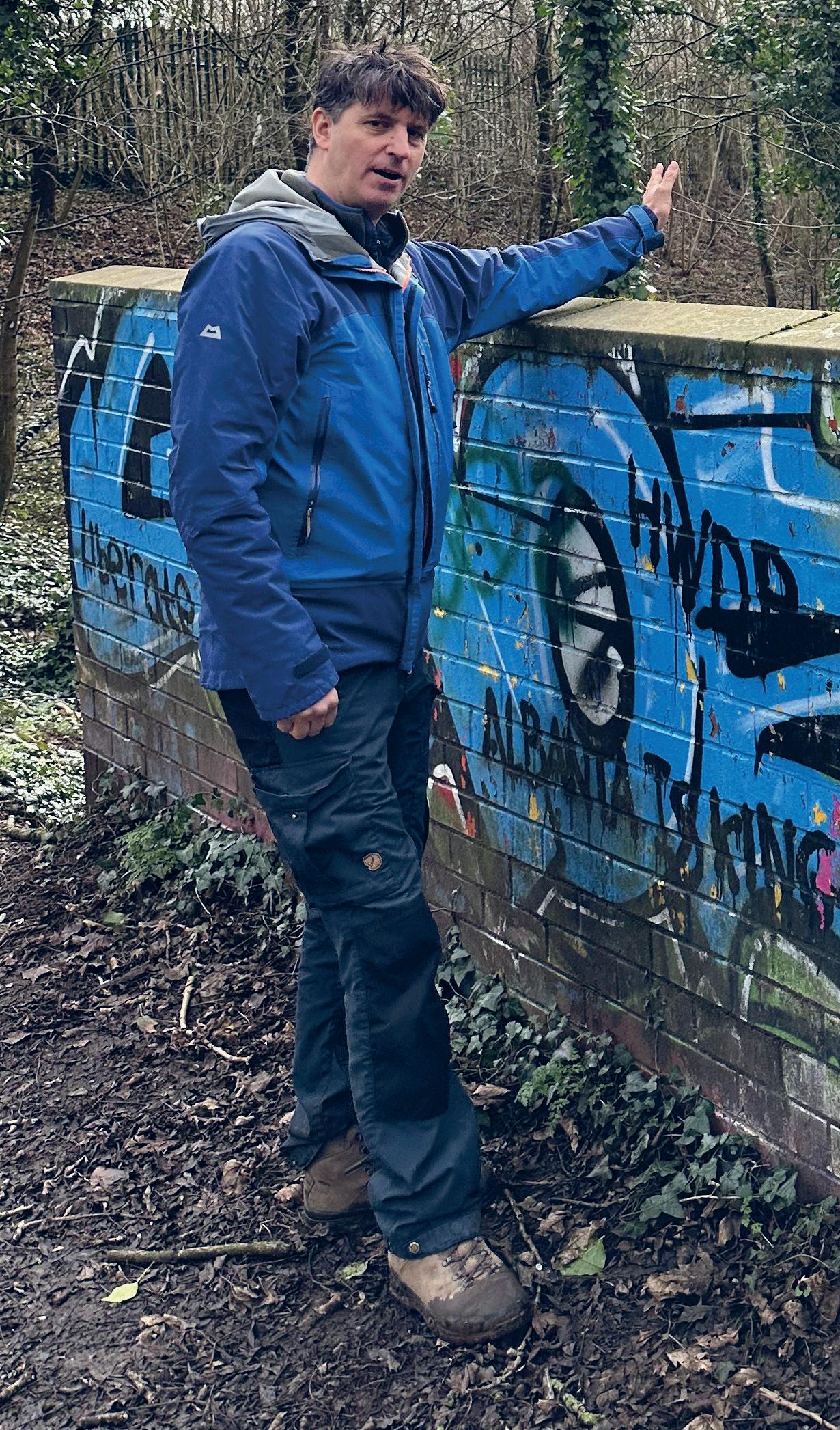
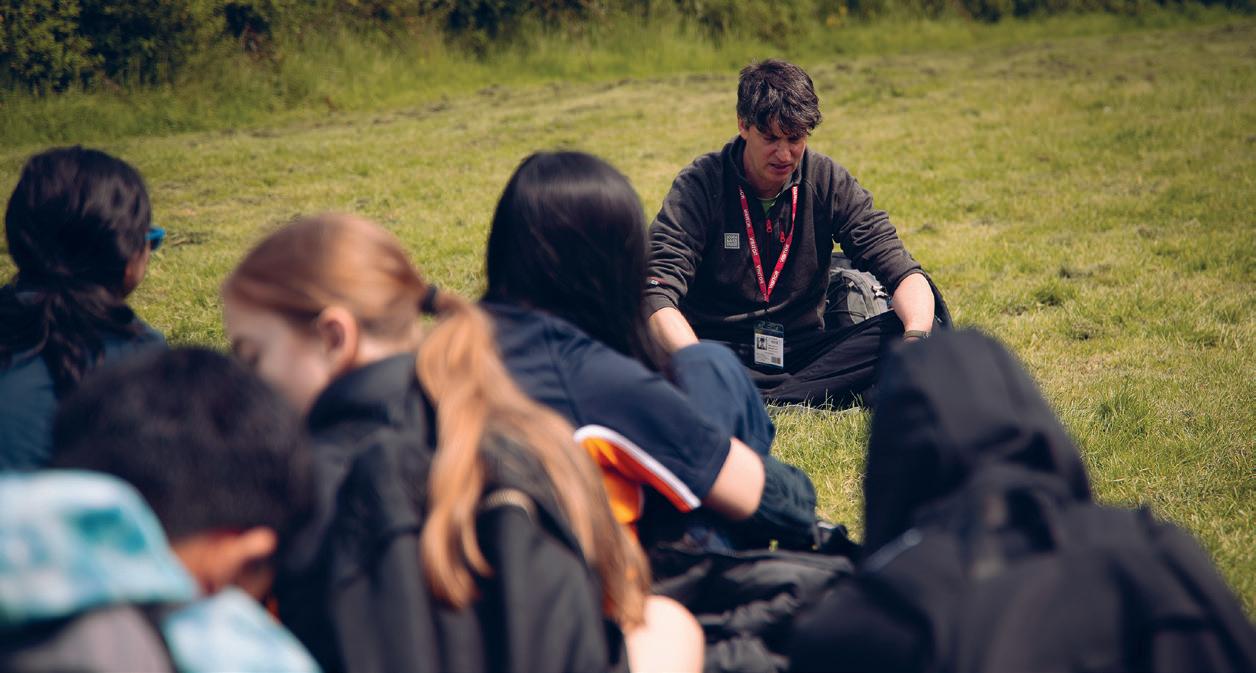
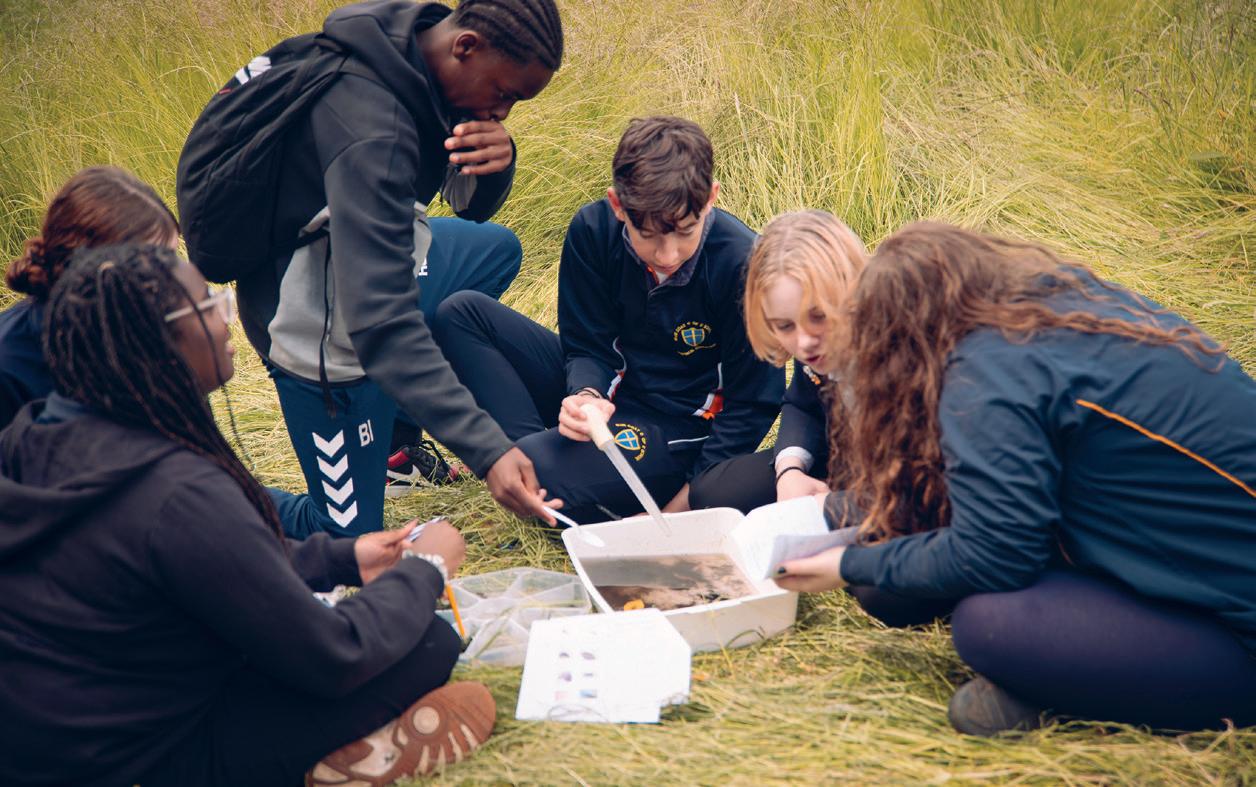
Regional Development Manager Gareth Morgan introduces a plan to regenerate Charterhouse Heritage Park, a unique urban wild place in the heart of Coventry.
Despite its relatively small population, Coventry has a big reputation: it is associated with Lady Godiva and is (allegedly) the birthplace of England’s patron Saint, St. George, and the British car industry. It suffered severe bomb damage in Second World War and was the model for George Eliot’s novel, Middlemarch. Now it is also on track to host the John Muir Trust’s first property management project in central England. Although undermanaged for decades, and despite some anti-social behaviour issues and inaccessible areas, the Charterhouse Heritage Park has considerable biodiversity value, lots of engagement opportunities and a huge potential for ecological enhancement, including areas of wetland, woodland and grassland.
It has been great to see the enthusiasm of local community groups, volunteers and school children as they discover hidden corners of the heritage park. With partners including Coventry City Council, Historic Coventry Trust and Warwickshire Wildlife Trust, we’ve already hosted wellbeing walks, river dipping events (illustrated above) and sensory awareness sessions, and look forward to engaging thousands more people in the future.
This project in the centre of England fulfils the charitable objectives of the John Muir Trust including: to conserve and protect wild places for the benefit of present and future generations; to work with local communities and encourage them to live in harmony with wild places; to promote an awareness and understanding of wild places for their own sake and for their value to the benefit of humanity; and to encourage voluntary participation in the conservation and renewal of wild places. Watch this space!
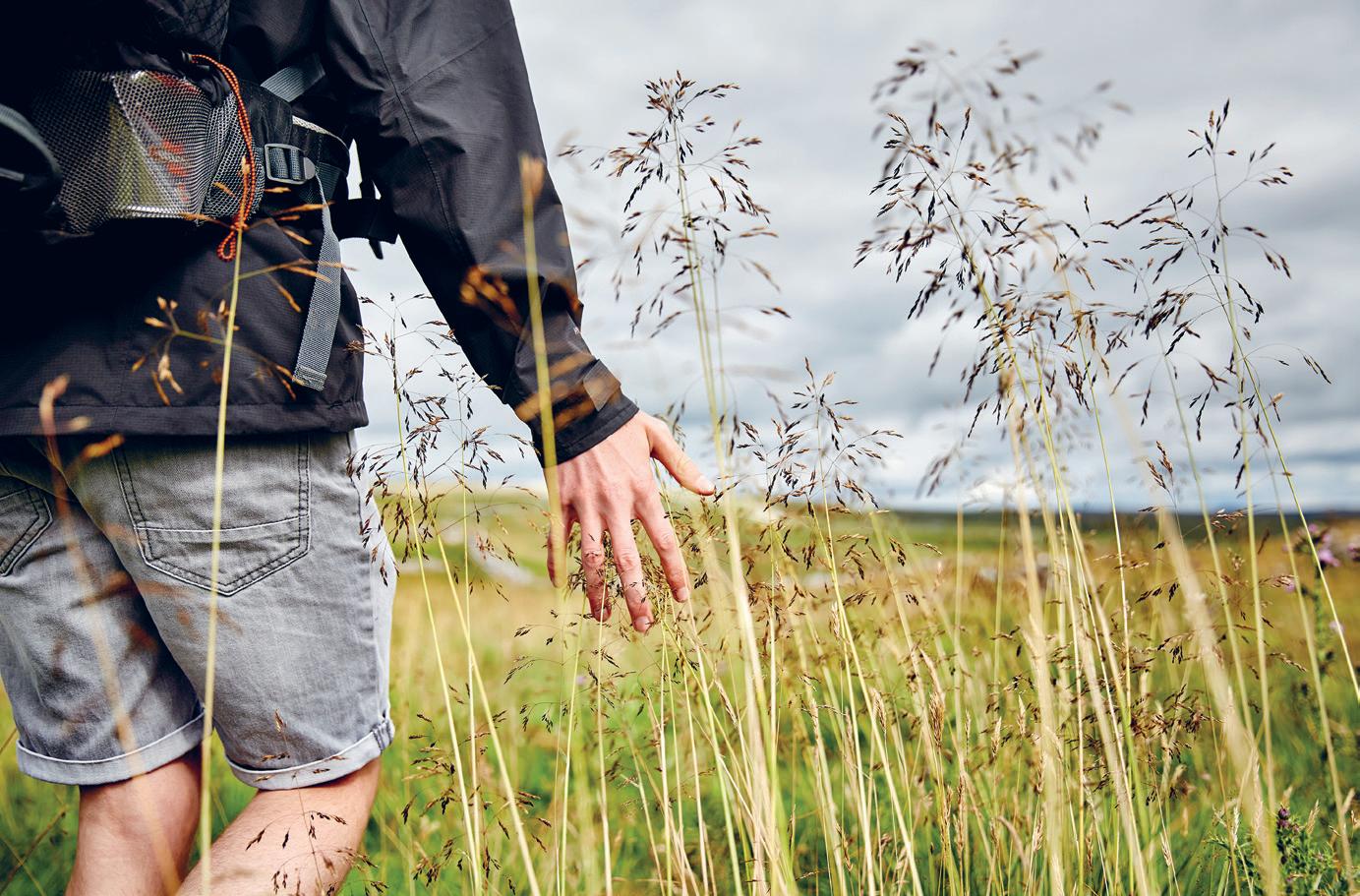
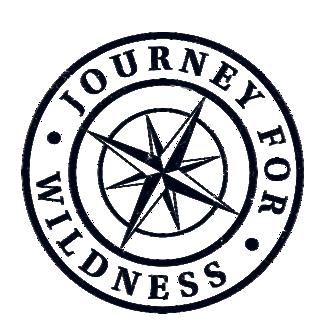
The next stage of our Vital Appeal has now begun: we’re asking our supporters to help us raise urgent funds to support our work to protect and restore the wild places in our care and meet our core objectives.
Could you take a Journey for Wildness and fundraise for us? Your Journey for Wildness could be anything you want it to be, in whatever way makes sense for you – it could be an exploration of your local park; a trip with friends to investigate a new wild place together; or a challenge to complete an epic trek. You could go in a group, a couple or by yourself; on foot, by bike, on a horse, in a wheelchair or on water.
You could climb a mountain, camp out under the stars, paddle board down rivers; or get creative and take photos, write poetry or observe and record birds or wildflowers. You could pick up litter, plant trees or wildflowers (with landowners’ permission). Or it could be a journey through time watching nature change with the seasons.
Journeys can be one big adventure, a series of micro-adventures, or even an inward journey like a ‘vision quest’. It’s entirely up to you: be as creative as you want!
Your journey is your own and we’d love you to share it with us while raising essential funds for our work to protect your favourite wild place. Enjoy, have fun, and support our precious wild places in the process. Check our website for inspirational stories such as:
• Long-time supporter Delia Kennedy who embarked on a 160 km walk with her very well-travelled little bear, TTT, who rides in the pouch on her rucksack.
• Development and Communications Intern Heather Graham, who took an epic one-week 1,837 km journey to visit all properties owned or managed by the John Muir Trust.
All donations from your Journey for Wildness will be targeted where they are needed most and spent on protecting wild land from development pressures and helping us continue our work to restore ecosystems. Find out more at johnmuirtrust.org/journeyforwildness
The latest cohort of Nevis Junior Rangers from Lochaber High School swapped classroom-based learning for discovering, exploring and conserving wild places:
• They carried out tree, river and pond health surveys, habitat monitoring, visitor surveys, path maintenance and litter picks.
• They learned to navigate with a map and compass, discovered how geology shapes the landscape around them and practised key Leave no Trace and bushcraft skills.
• They went deer stalking and visited NatureScot’s deer larder at Creag Meagaidh, where they learned how to turn a deer carcass into tasty burgers.
• They gained the following qualifications: First Aid at Work; Leave no Trace; Scottish Countryside Rangers Association Junior Ranger Award; and our John Muir Explorer Award.
Tom Corke joined us recently as the Trust’s Mountain Woodland Project Manager at East Schiehallion. Our aim for the whole site is to restore the natural order of things, including the restoration of a natural tree line, and native woodland.
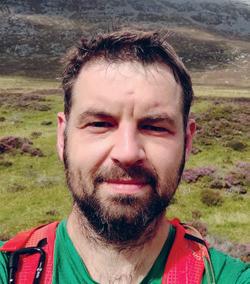
Tom (pictured), will continue to work alongside partners surveying and plans to bring the woodland into better condition over time. The Mountain Woodland Action group is helping to source more trees and develop local seed production.
Tom says he is enjoying his new job: “The best part has been exploring the land and getting to know a relatively small area really well, and discovering some amazing places beyond the most popular visitor routes.”
• Between January and mid-May we continued to respond to new applications for telecom masts in Wild Land Areas. Thanks to everyone who has also been responding to applications. A coalition of organisations met on 30 April to discuss criteria for rating proposed masts as ‘red, amber, green’ which could be used by the Scottish Rural Network programme to prioritise which masts to build. The Trust and Mountaineering Scotland subsequently shared draft criteria with the coalition for feedback.
• At the end of March we responded to the Scottish Government’s consultation on deer reform legislation after working closely with Scottish Environment LINK’s deer group on a collective LINK response. We’ve been told there was a great response to this consultation on behalf of wild places. Many Members got in touch to confirm they’d submitted a response following our request for Members to get involved. Thank you to those who did!
• In April, Paul Sweeney, MSP for Glasgow (Region) and Colin Smyth, MSP for South Scotland (Region), joined Phoenix Futures and Members of Trust staff for an afternoon of tree planting at Glenlude.
• We reviewed the planning application for the proposed Earba pumped hydro scheme and, after consulting our Members, submitted an objection. The developers of Earba have informed us about another proposal, Fearna pumped hydro scheme, which is at scoping stage. This proposal is within the Kinlochhourn – Knoydart – Morar Wild Land Area, at a site that extends north from the northern shore of Loch Cuaich.
• By summer this year we will have met with 14 MSPs representing all political parties. Topics for discussion have varied but included the revised Carbon Emissions Land Tax proposal, an advocacy plan for the MSP nature champion of sea trout, peatlands protection and the Scottish Government’s legislative proposals on deer reform.
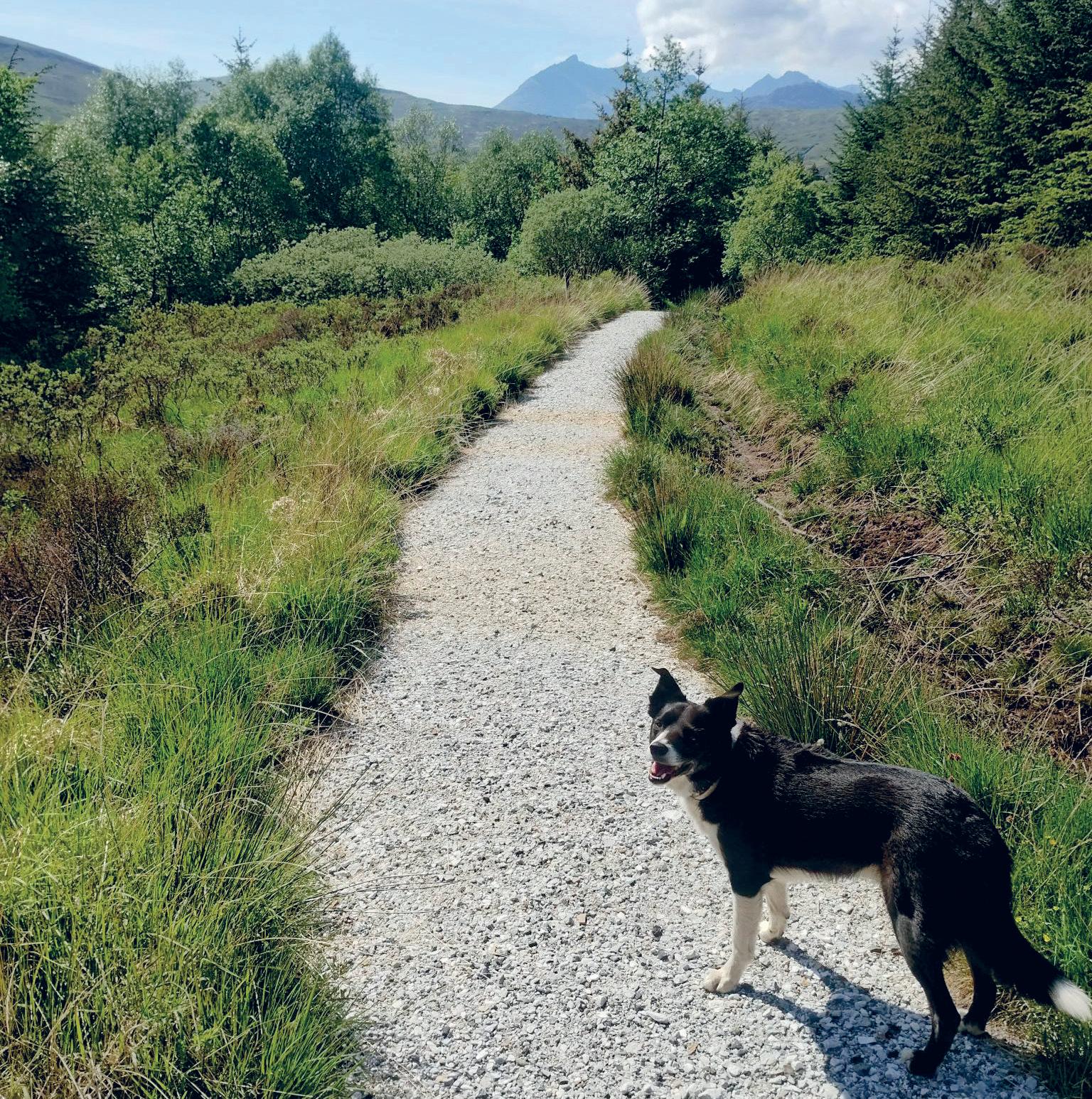
You may remember last year we told you about an innovative approach to path building on a boggy layer of peat on Skye. John MacRae, our Skye manager and local crofter, experimented with laying raw, unprocessed sheep wool on the bare ground, rather than the usual plastic membrane, to keep the gravel in place. A year on, we are pleased to report that it has been a huge success. It’s a win-win situation – using local resources, quarry materials and sheep wool, that have no other use. Anyone who’s walked in Scotland in boggy conditions will testify that traditional path laying methods could be improved for the user experience. Floating paths and railway lines across Rannoch Moor, on birch logs as well as on sheep wool, have proven that the technique works and holds up over time.
Other conservation organisations were inspired by the
story and John has been asked to train their staff in his unusual technique. We need to overcome some bureaucracy first as some concern has been raised that the chemicals used to treat the sheep, for ticks for example, remains in the wool. We’re confident that we can prove the chemicals are dormant by the time we use the wool in the paths.
The local community would like to see more such paths and we have plans afoot! John has been gathering wool for several years now, so we have plenty for the next planned route; 300 fleeces are required for a 100m stretch of path on boggy ground. While the fleeces are free, and we welcome volunteers to help us lay paths, we still need to raise funds for the digger and aggregate required to complete the work. Please consider donating to our Wild Ways Path Appeal johnmuirtrust.org/wildways
Despite Storm Kathleen’s projected 64kph winds, 19 people headed to Glenlude in mid April to continue work on Jamie’s Wood: one of our native tree planting projects there which was created in memory of Jamie, a passionate hiker, explorer and advocate for wild places. His friends and family have fundraised more than £70,000 for the project and make the trip to Glenlude regularly to plant new trees and carry out important maintenance work to encourage a thriving mixed woodland.
Raring to go at 9am, well prepared with waterproofs, and trays of pasties, the volunteers walked round to the planting site on the lee side of the hill sheltered from the worst of the wind.
After hours of blustery wind, trees, chatter and laughter, they had successfully planted 120 downy birch, 30 rowan, 30 wild cherry and 24 willows.
“It was a special day for us all” explained one of the volunteers, Sophie; “It was a time for reflection as well as celebration for someone who had such a love for the outdoors and wanted to bring people together to enjoy wild places and engage with nature”.
Some of the volunteers never knew Jamie but had come as likeminded individuals through friends of friends and family. Every person who contributes to Jamie’s Wood becomes part of his ongoing story.
Sixty guests recently joined our Glenlude Manager Karen Purvis to boost native woodland habitat by planting 250 native trees.
The event was organised by our partners at Phoenix Futures, a UK-wide charity that helps people overcome drug and alcohol problems.
“It’s therapy by stealth,” says Phoenix’s Environmental and Sustainability Manager Jon Hall. “People get to enjoy themselves in the great outdoors while learning practical conservation skills and building their self-esteem.”
For the past 12 years, Phoenix has been planting trees at Glenlude to celebrate everyone who has successfully passed through the organisation’s community and residential programmes.
Special guests Colin Smyth MSP for South Scotland and Paul Sweeney MSP for Glasgow (Region) joined this year’s celebrations.
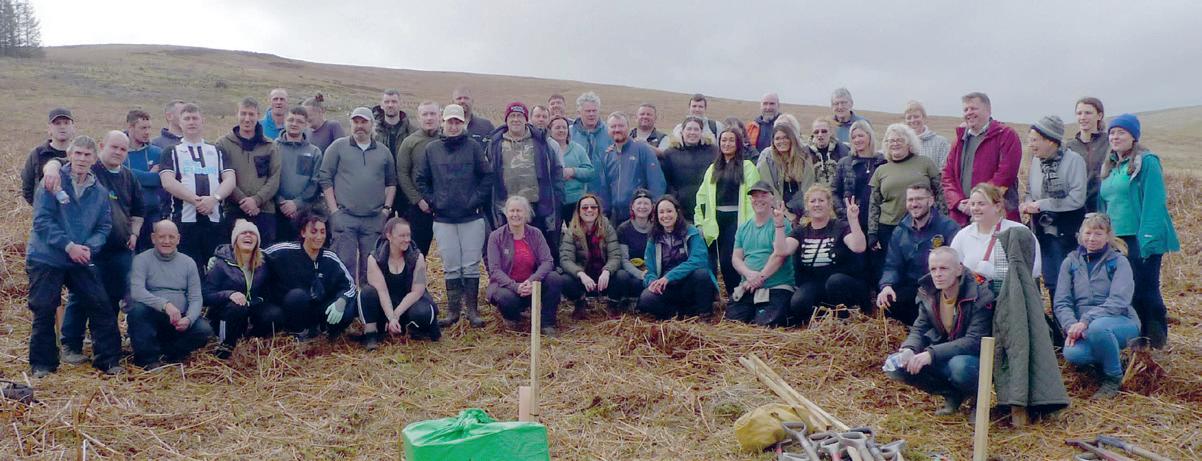
Continued from page 4
• The Trust continued its advocacy for peatlands protection this year by contributing to the Scottish Government’s Peatland Advisory Group work examining existing guidance for onshore wind development on peatland. We sent a briefing before the one-year review of Scotland’s Fourth National Planning Framework (and were pleased to see this included in the official evidence pack for the 14 May Committee meeting). In April, we learned that the Scottish Government’s peatland team is working closely with other government departments to look at how peatlands can be more effectively managed and restored, particularly through future agricultural payments that would enable partial re-wetting. A summary of our thoughts about renewable development on peatland and planning policy has been published on our website.
• In May, the Trust submitted its response to the Net Zero, Energy and Transport Committee’s Call for views on the Land Reform Bill. We also signed on to Scottish Environment LINK’s response.
• We were pleased to receive written confirmation from the Scottish Government at the start of May that it will consult on options for a carbon land tax on larger landholdings in summer 2024, remains committed to implementing the independent deer working group recommendations, and that they will be exploring how re-wetting peatlands can co-exist with agricultural activity. In May the Scottish Government also reaffirmed its commitment to designating a third National Park in Scotland. The Trust will continue to pressure the Scottish Government to ensure the new National Park delivers wild places where nature, people and communities have the freedom to thrive.
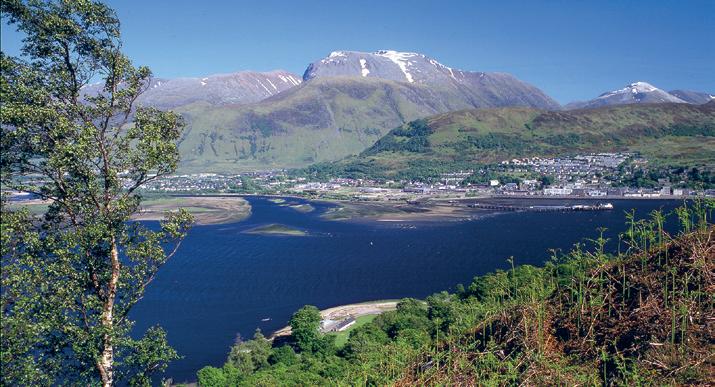

Thirlmere Resilience Partnership Officer Isaac Johnston says it’s in all our interests to create a wildlife friendly environment on a landscape scale.
. In 2015, Storm Desmond was the fourth named storm of the season and brought severe gales with gusts up to 130kph, accompanied by a new UK record of 405mm rainfall at Thirlmere in just 38 hours.
The heavy rainfall caused severe disruption in the region with blocked roads, collapsed bridges and evacuated homes. Tens of thousands of houses lost power when an electrical substation was submerged in flood water, and landslides and flooding closed main roads and caused major disruption to rail services.
Despite the unprecedented amount of water, and extreme flooding, drinking water was in short supply. Huge volumes of sediment had been churned in the reservoir, putting the water supply at risk. This prompted a massive shift in the way water companies wanted to manage the land in their care, and introduce practices to help maintain a sustainable, clean supply of water.
In 2020, the Trust entered a partnership with United Utilities, Natural England, Cumbria Wildlife Trust, West Cumbria Rivers Trust and the Centre for Ecology and Hydrology at Lancaster University, to manage the land around Thirlmere reservoir to create a resilient water catchment, supplying the water needed by people while providing a home for native biodiversity.
Together, the partnership’s aim is to introduce naturebased solutions that will slow the flow of water from the land to reduce the impacts of flooding and drought and
secure a long-term, reliable supply of good quality water for West Cumbria.
Restoring peatland, reducing the damage caused by high numbers of grazing sheep and deer, changing forest management practices so there is more self-sustaining mixed native woodland cover and less conifer, will enable us to restore the catchment.
Introducing sustainable farming methods will also help. West Head Farm had more than 2,000 sheep and was one of the largest in Cumbria. Now a local shepherd grazes approximately 500 sheep and the vegetation is already visibly recovering on a landscape scale.
Four years into the partnership project, we are making good progress: volunteers have helped plant more than 4,000 trees, we’ve held 19 work parties, and facilitated several educational visits with local colleges, universities and young ranger groups.
Our plans are to continue planting trees across the site and create a tree nursery. For nature to thrive, it benefits from having a local provenance (plants perform better in local soil, ecology and environment), so the nursery is a very important element in the plan. The Trust is working to establish the old farmhouse as a community-led hub for collecting seed locally, nurturing them at home or in the nursery, and planting them out a few years later across the 40km2 site. This will include wild flowers and montane woodland plants to help stabilise the steep slopes.
Earlier this year the Trust circulated a Members-only survey asking about your views on our ongoing campaign to implement a Carbon Emissions Land Tax (CELT).
The proposal is the first of its kind in the world and will encourage the country’s largest landowners to lock up vast amounts of carbon while boosting biodiversity, by disincentivising damaging land management practice through a new tax and rewarding nature and climatepositive land use through tax rebates.
We would like to thank all Members who responded to the survey.
• 90 per cent of Members support the introduction of a CELT
• Over 97 per cent support the principle that large landowners have a duty to manage their land in the public interest – for nature, climate and communities
• 90 per cent agree that large landowners who produce greenhouse gases should pay for the costs resulting from them (polluters pay principle).
The survey also had an open section for additional questions and comments. Subjects ranged from questioning the immense body of scientific research evidencing climate change to comments on the use
of taxation as a behavioural change mechanism and the impact of unintended consequences on large landowners and rural communities. We have taken all your comments on board and fed back to the Scottish Government team we work with.
In particular, we addressed the question regarding the ability to measure greenhouse gas emissions from the land. We worked on an alternative proposal that favours a rebate system for specific land management decisions as opposed to measuring emissions directly. This means that landowners will be rewarded for actions they take, such as reducing deer densities or restoring peatland, as opposed to being taxed according to greenhouse gas emissions measured on their land.
You can read more about this new system in our updated briefing available online and sign the petition at johnmuirtrust.org/celt
On the webpage you can also sign our public petition asking the Scottish Government to implement CELT in the upcoming Land Reform Bill.
Together we can pressure our politicians to protect and restore wild places on a national scale and inspire action across the world.
Last year we announced the purchase of a 45-acre site on the shoreline of Loch a’ Chàirn Bhàin with a view to creating a community and visitor hub.
The Kylesku Lodges site has a dramatic view across the loch to the spectacular three-peak mountain of Quinag, which the Trust has looked after since 2005, and includes 10 holiday lodges which are in keeping with the surrounding landscape.
The acquisition signals the Trust’s ambition to work with local communities and crofters to boost the fragile economy of the area, and strengthen the bond between people, landscape and nature in this beautiful part of the Highlands.
The site sits within the North West Highlands Geopark so there is fascinating geology all around, and it’s a great area for wildlife spotting:
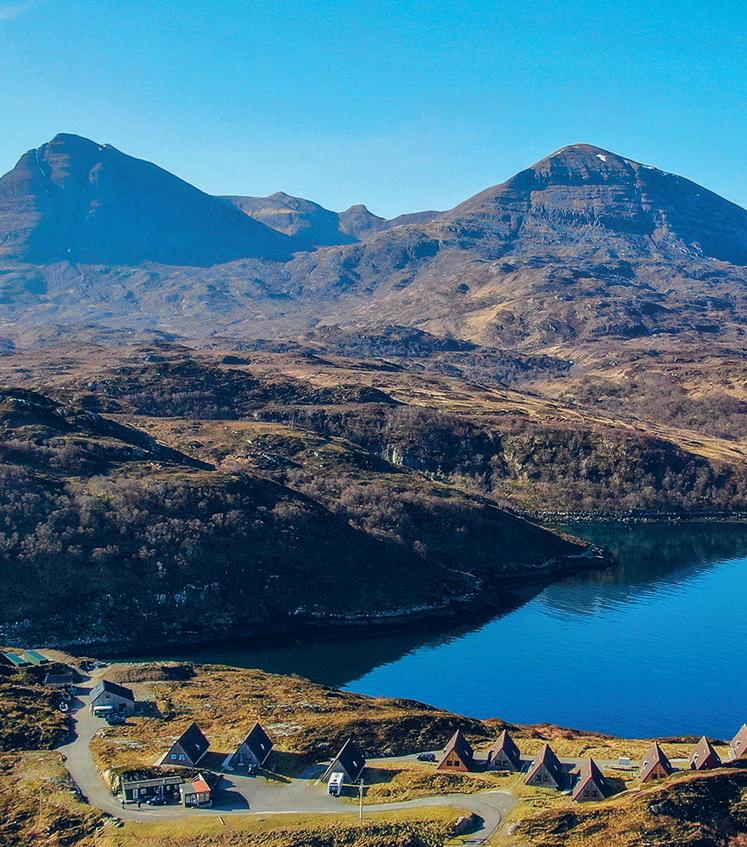
A lodge with a view
eagles, dolphins, seals, otters and many different bird species around the loch.
The region is utterly spoilt for beaches, such as Oldshoremore and Polin, and the unspoilt beauty of our
very own Sandwood Bay. Walking highlights include the triple headed range of Quinag and short but equally beautiful walks through the Reay Estate or to the Bone Caves where animal bones found in one of the limestone caves include brown bear, reindeer and lynx.
If water is your thing, you can visit Loch Glencoul and Eas a’ Chual Aluinn – the highest waterfall in Britain, with several seal colonies. Or you can enjoy fishing, sea angling, kayaking and canoeing, paddleboarding, surfing, or boat tours and cruises.
All lodges have stunning sea loch and mountain views, the freshest of air and an abundance of wildlife, (and excellent wifi).
Visit our website to support the Trust’s work with your booking. kyleskulodges.co.uk
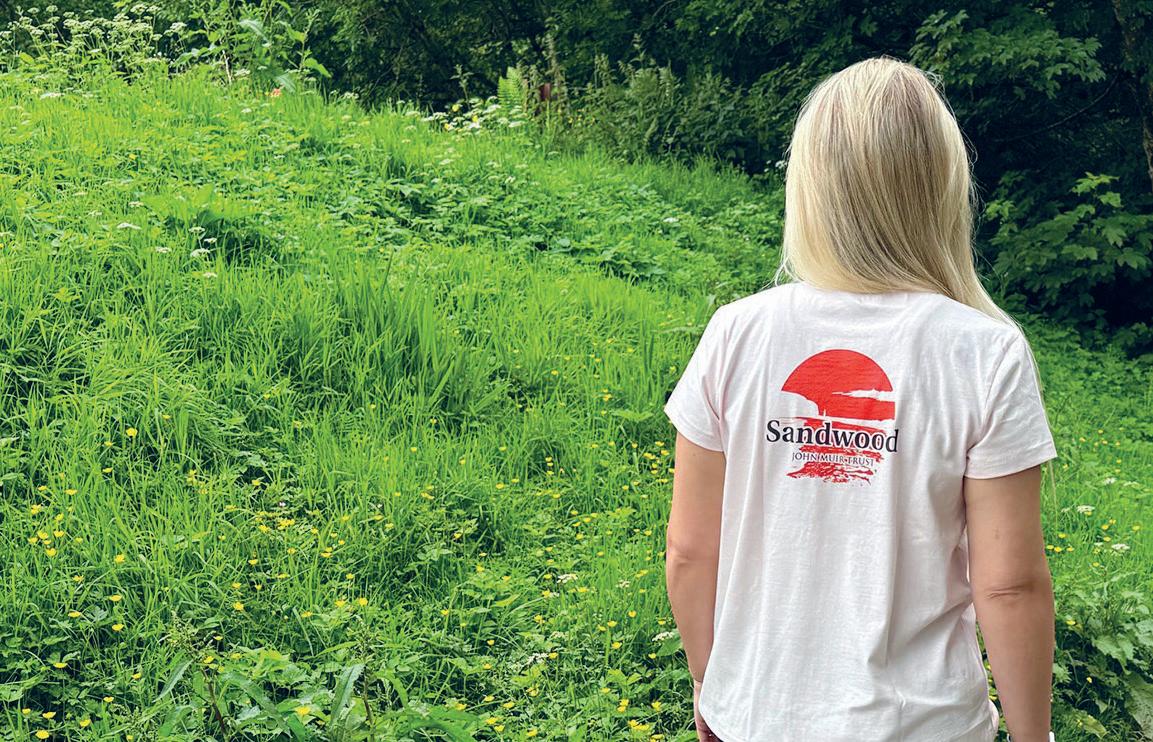
There are many ways to support our work to care for wild places. You can shop with us, donate to an appeal, get hands-on as a volunteer or fundraise for us.
Shop
Show your support for wild places this summer by buying from our shop johnmuirtrust.org/shop
Here comes summer!
Remember great days out by bagging a T-shirt* featuring one of the special wild places in our care, including Ben Nevis, Schiehallion and Sandwood Bay.
*Please note a separate shipping charge applies to garments.
Mountain memories
Set your beverage down in style on one of our locally-sourced coasters, (pictured) made by a social enterprise in Highland Perthshire that supports young and disadvantaged people into employment.
Wish you were here
Keep in touch with friends and family with a beautiful wild landscape. Check out our latest selection of postcards, featuring Ben Nevis, Sandwood, Blà Bheinn on Skye and Quinag in Assynt.
of symbolic gifts, such as ‘plant a tree’ and ‘adopt an acre’ make a real and lasting impact.
If you’d like to donate to specific areas of work such as peatland restoration or our policy work, you can give to one of our other appeals. You can help us spread the word –talk to your friends and family about our work and share our social media posts and newsletters with those who you think might be interested.
The Trust relies on the generous donations of all our Members and supporters and we are extremely grateful for your ongoing support.
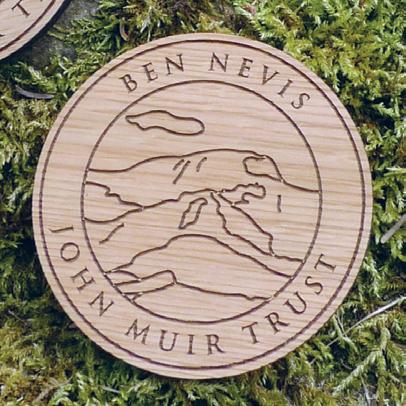
Browse and order our full range of merchandise at johnmuirtrust.org/ shop. Contact us on 01796 484976 or email orders@johnmuirtrust.org
Give
We still need donations to our Vital Appeal. You can find out more on our website: johnmuirtrust. org/support-us
Keep us in mind when looking for gifts for your loved ones. Our range
By volunteering with us you can make a difference to the wild places you love, build new skills, meet like-minded people and make new friends. There are plenty of ways that you can volunteer with us; including practical conservation; working in our Visitor Centre or helping our Local Member Groups. If you’d like to support the Trust in any way, please email info@johnmuirtrust.org. We would love to hear from you!
In addition to our AGM on Saturday 14 September, we are hosting a series of gatherings across the UK, including in Aberdeen (3 October), Edinburgh (2 November) and Coventry (date tbc). We’d love to see you. Keep an eye out for more details at johnmuirtrust. org/events
• Sign up to our e-newsletter at johnmuirtrust.org/newsletter
• Opt to receive your mailings online – or update your contact details – by emailing us at membership@johnmuirtrust.org
• Follow us via Facebook and X @JohnMuirTrust